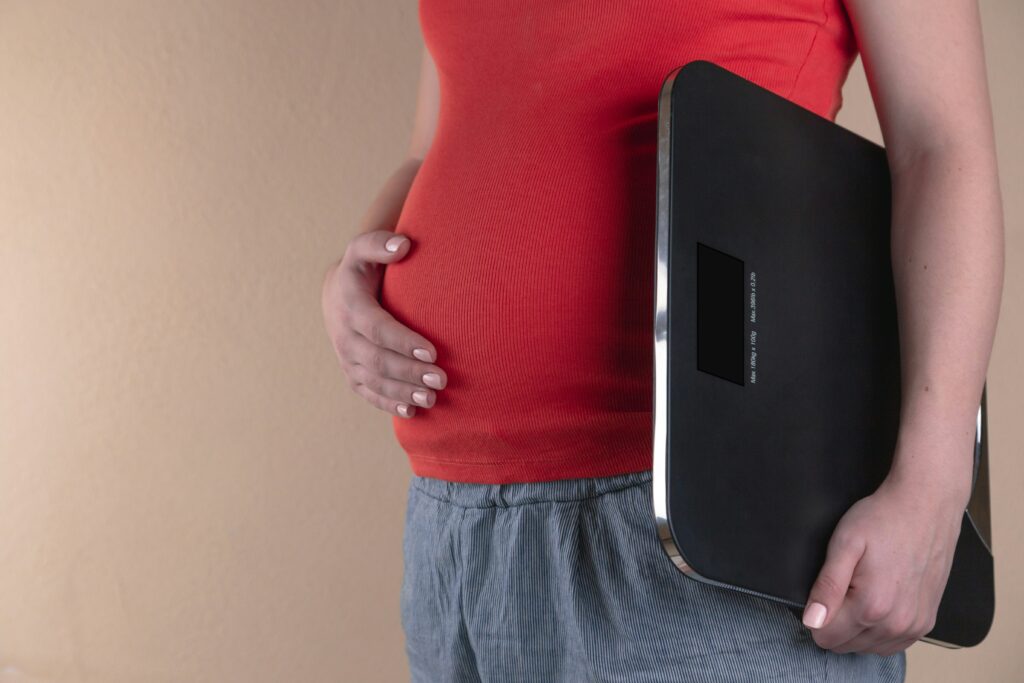These different pathological situations should be analyzed because they can cause the condition.
It's interesting to note that ascites can be categorized into several subtypes. While not cancer, this can occur with cancer, as there is an overproduction of fluid along the line of cancer. Ascites are commonly categorized as transudate and effusion, detectable by some diagnostic examination. It is known as the cause, which is given to eliminate during these examinations, the doctor can also indicate. In some cases, treatment must be done urgently. It carries a high mortality rate, with complications increasing mortality.

Here, we will explain ascites-related things , most importantly. This means that after you read this, you will know what can lead to this, and there are many causes. Also, you will learn about all the typical symptoms. We will also discuss the diagnosis of this at length. Lastly, you will learn about doctors' treatments and the prognosis. Are you interested? Learn more.
You may be astounded to learn that the Greek term ascites translates to sack. The normal peritoneal cavity may include a small sum of fluid (approximately 25-50 ml) in a normal, healthy state. This unique fluid acts as a lubricant that protects the tissues that line the abdominal wall and the viscera. Ascites is the term used only when describing this abnormal fluid accumulation. Ascites can only be confirmed after at least 1,500 ml of fluid is in the peritoneal cavity. Depending on the pathological condition, the composition and physical characteristics of the fluid may differ.
Ascites can be classified simply as transudative or exudative by the protein content. The protein content is said to be less than 25 g/L for transudative ascites, and these are subtle distinctions between the classes of ascites but can be observed with diagnostic testing. Understanding what kind of Ascites can lead to finding the cause. Furthermore, ascites can also be classified based on the severity of the disease. In such cases, ascites are classified into three degrees. The disease is mild in grade one and can only be seen after certain scans. Grade two depends on a lateral bulge, and grade three is directly visible.
Suppose ascites are difficult to grasp, so do not despair. Understood this way, we will explain why this disease occurs as easily as possible. Various diseases and situations can cause abdominal dropsy, as it is commonly called. Let us see why the peritoneal membrane lets too much fluid into the abdomen. In rare instances, a few patients with excess fluid will present mixed ascites. In these cases, we count two or more causes. Firstly, many patients with undiagnosed ascites eventually turn out to have multiple causes.

This most common cause of ascites accompanies liver cirrhosis. Cirrhosis is the most common underlying cause (possibly up to 80% of cases). Among these, a certain proportion of patients may have the phenomena of sudden hemorrhage from ascitic fluid due to an etiology that cannot be identified. This leads to the further conclusion that diseases that can inflict severe damage on the liver cause ascites. Among such diseases, we can count long-term infections with the hepatitis C or B virus.
Also, adding to ascites is the fact that drinking alcohol in large amounts over a long period is bad for the liver and likely to cause it. The presence of ascites also worsens cirrhosis. Patients with this cause are more likely to be admitted to hospital than those from other causes, as they may require liver transplantation.
In 10% of cases of peritoneal fluid, cancer is implicated. For example, sufferers of abdominal cancers of varying sorts may also get this disease. Furthermore, cancer in other forms can also produce it. Such conditions include cancer of the colon, ovaries, and uterus, but equally well, it can be because such conditions are very common today that liver cancer is one of our biggest problems (currently).
In such cases, the condition has the somewhat distressing name of malignant ascites. It is usually due to metastasis to the peritoneum by the cancer. If doctors are unable to determine that the tumor is auricular, the protein content is generally quite high.
The disease that we describe can also be due to an abnormality in heart function. Fluid overload occurs in heart failure, particularly when the right ventricle is involved. Volume overload is the back pressure in the veins due to the heart's inability to pump well enough. This extended scenario leads to fluid leakage from the blood vessels into the abdominal cavity. So, there is much to do with the heart and excess fluid.

Lots of different sorts of infections can create too much liquid. This includes diseases like tuberculosis. It is a dangerous disease and causes other health disorders. It mainly attacks the lungs but also other parts. Digestive system tuberculosis commonly occurs through a foodborne disease. This form of TB can be seen in patients of any age. But generally, it is not the youth but rather the older alcohol abuser.
Pancreas-related issues can further lead to excess fluid. The most worrisome is pancreatitis. In the case of ascites, pancreatitis (acute or chronic) is one option. Seepage of fluid occurs in the abdominal cavity due to the inflammatory process in the pancreas. Such infection is generally due to a high intake of alcohol. So, we can say that one of the prime reasons is drinking alcohol.
Do you know what dialysis is? This is a procedure that purifies the blood from toxins using dialysis. It is an easy procedure performed by doctors on patients in specific circumstances. The kidneys do this in a normal individual. Hence, in people with end-stage renal failure, dialysis is required. In people with poorly treated diabetes, this can occur with the use of dialysis.
There are many more reasons for ascites, but those are much more unusual. For example, the use of intravenous drugs is an infrequent cause. Actually, obesity and other issues connected with cholesterol buildup also contribute to the condition. Specialists also attribute excess fluid to severe malnutrition and related changes in the ovaries.

How do you know there is an excess of this precise fluid somewhere in the belly? While in itself not a condition, we can characterize ascites with an important symptom. The symptoms will also differ based on the disease that triggered the ascites. Men typically have less of this fluid, but that's another comment for another day. In contrast, women may carry a higher fluid volume according to the state of their menstrual cycle.
Which, by the way, is what happens in the body when there is fluid excess? The very first abnormality is referred to as portal hypertension (PV), which results in the expansion of blood vessels. Fluid accumulates, and kidney function worsens as the disease progresses. Then, the earliest symptoms show up.
The most easily recognizable symptom is the typical abdominal distension. The belly looks big, a bit like a balloon inflated. The patient often recognizes this manifestation when the waistband of trousers or a belt starts to press on them. Bloating (may or may not be a symptom experienced by the patient. It is painless sometimes, and sometimes it causes discomfort and a feeling of distension inside the abdomen.) Patients find the increasing abdominal girth disturbing. They might also confuse it for weight gain from a caloric surplus! The bloating can also lead to a postprandial satiety effect in patients.
The peritoneum's liquids also count their weight, which is why the patients gain weight. Abdominal circumference is the first symptom that is bigger than that. However, it should be noted that a caloric diet does not explain fluid overload. And it just seems we get fatter, the belly gets bigger with no great deviation in diet or lifestyle — and there is nothing we can do about it.
On the other hand, ascites are readily differentiated from obesity because symptoms associated with fluid overload occur acutely, whereas obesity takes months to years to develop. The other point to mention is that when it is the cancer that is the cause, the weight loss takes place instead of the weight gain.

One more significant indicator is difficulty in breathing. Fluid accumulates, and pressure in the abdominal cavity makes breathing hard. Irreversible shortness of breath typically happens in later stages, when fluid begins to press on the lungs or diaphragm. Other respiratory-related issues may arise depending on the cause; tuberculosis may lead to breathing problems. Another reason for feeling breathless is heart failure. Exercise intolerance and wheezing are then also observed.
By the way, fever is not always detected, just in a few cases of ascites. For instance, if the underlying reason is an infection. Spontaneous bacterial peritonitis is associated with more classic symptoms such as fever and confusion. Nausea and vomiting have also been reported for a minority of those cases as well. However, such symptoms do not help detect the disease.
Diagnosis of excess fluid in abdominal regions – Is that simple? They, after all, should be able to. First, doctors talk to patients. However, he adds that you can learn many important things about a patient if you ask the right questions. This is important when asking a question on how often alcohol is consumed, for instance. Moreover, you also have to do some specific kinds of tests. Occasionally, a few results can give you a heads-up about the cause of ascites. In serious cases, the patient is in danger of dying, so a speedy diagnosis is vital.
Many different findings are needed to substantiate the excess fluid and its cause. Blood cell count, bacterial culture, protein, and albumin are some initial tests that specialists will perform. The blood allows for testing of these parameters, or fluid can be collected. These results suggest problems with the liver or heart. In summary, patients should generally have liver enzyme tests and a full blood count. If doctors have suspicions, they could do extra tests. For instance, if secondary peritonitis is suspected, cholesterol and glucose levels are examined. Doctors may also test for amylase when pancreatic problems arise.
In cases of excess fluid, imaging studies play an important role. The doctor does a chest X-ray. Higher diaphragm and other tests are positive. However, ultrasound is the most sensitive test for this. Even the smallest amount of fluid can be detected when we use an ultrasound. They help a lot in the diagnosis and also in detecting fluid, which can be detected using CT scans. Doctors also frequently perform an ultrasound to detect cancer in the liver or other regions. It is often hard to tell benign ascites by looking. First, abdominal bloating is slight. So, you then indicate imaging studies.

Another more specific but not rare method is paracentesis of the abdomen. This particular method is of great help to doctors. However, we consider it an invasive process. Fluid can be extracted from the peritoneal cavity by the surgeon puncturing the peritoneal cavity. They put this fluid through laboratory tests, resulting in extremely significant findings. While not used often, this method is the quickest way to check for abdominal cavity fluid. Most specialists in the field believe this should only be done on people who are in hospital. This will help derive significant outcomes simply and quickly.
When doctors realize there are ascites, They initiate the process of treatment. Here, the treatment method depends on the cause of the excess fluids. However, treatment aims to decrease and control the fluid, avoid contre-indications, alleviate the symptoms, and avoid the evolution of the illness. This is the foundation, which can be done through some avenues. Drugs are used, and so on. The disease that led to this excess liquid should also be cured. So, let's look at how doctors treat it.
Medications, which are employed for several ailments, can also be used to cure ascites. In this condition, doctors primarily use diuretics. They assist in extracting excess liquid out of the body that causes swelling. These drugs are injected through a vein or taken by mouth, based on the patient's condition. Now, many unpleasant symptoms can be alleviated with these drugs. As a result, abdominal bloating, pain, and other symptoms are minimized.
Moreover, patients who have any treatable disease should receive specific pharmacotherapy for those diseases. To offer an illustration, patients with malignancies necessitate a higher level of chemotherapy. Antibiotics are also needed for some infections.
This requires a complete shift in your everyday routine. This step in the course of treatment is crucial. Most importantly, the patients should restrict sodium in the diet. The first line of treatment is to restrict salt in the diet, promoting urine output. Supports for sodium restriction are diuretics. Articles tell us that 15% of patients respond to salt restriction. Patients should limit sodium intake so they do not exceed 2,000 mg daily.
Since weight change and fluid loss directly correlate to the sodium balance of patients, weight loss is also a target of therapy. Another important thing for all patients is to stop drinking alcohol. Alcoholic drinks are the culprits in many of those instances. But the cause is different, and alcohol makes the condition of patients worse. And that is not what treatment is about!

In extreme scenarios, medical professionals have to apply harsh treatments. Methods are likewise utilized for individuals who do not respond to diuretics. The tension of the abdomen in patients who are in serious condition means that they must be admitted to the hospital to go through paracentesis. This procedure is done for symptomatic relief by doctors or performed in patients with tense ascites. This involves surgeons piercing the abdomen to remove fluid directly from it. It sounds scary, but the technique is quite simple in the end, and very few problems arise with it.
Obesity may make fluid harder to identify on examination. In that case, ultrasound can be useful. Also, researchers have developed many types of pumps over the years. None of them work reliably, though, at least not right now. Well, we are waiting for more research and some discoveries!
Apart from being a common clinical finding, the prognosis of patients with ascites varies sometimes due to the cause and its chronicity. However, we need to underscore that it can also be life-threatening. Those who get treated are treated better. Things are even worse for cirrhosis patients. Half of these people can be dead in three years, in some cases. Those are some terrible statistics. It is not something that patients take lightly, either, when they do not respond to treatment. Complications also decrease the remaining odds of survival. So what problems can ascites give you when untreated?
Ascites do not kill directly, but they can cause problems. First, there is the infection itself. The medical term is spontaneous bacterial peritonitis (SBP). Mortality is commonly associated with aggravated liver and kidney disorders due to infection. Here, antibiotic treatment is lifesaving and crucial.
Another issue is the fluid leak onto the wall of the abdomen. This is followed by reduced respiration and elevated breath rate. It leads to complications in breathing, and less air reaches through. We have already mentioned this symptom as shortness of breath due to ascites. This is a sign of an effusion.
Another leading issue that fluid overload can result in is gastrointestinal bleeding. Hemorrhagic ascites is an uncommon complication among patients with cirrhosis. However, patients with bleeding and cirrhosis have a very bad prognosis. Bacterial infections also develop more often in patients with hemorrhagic ascites.
Table of Contents